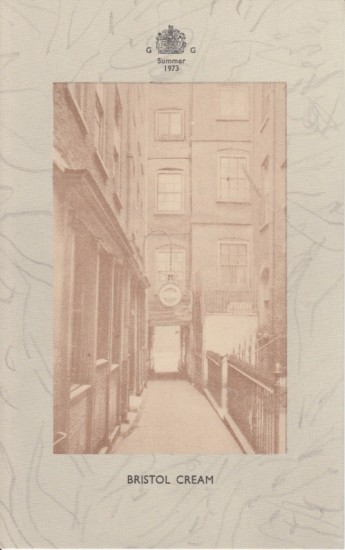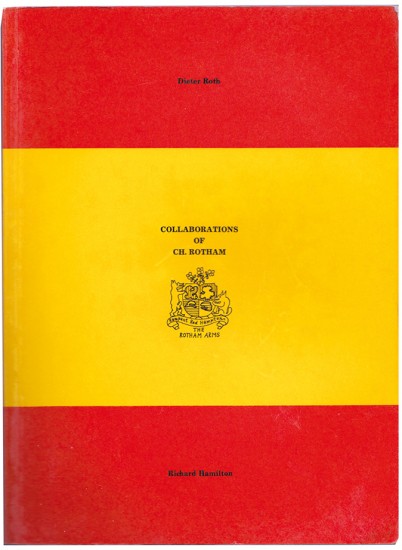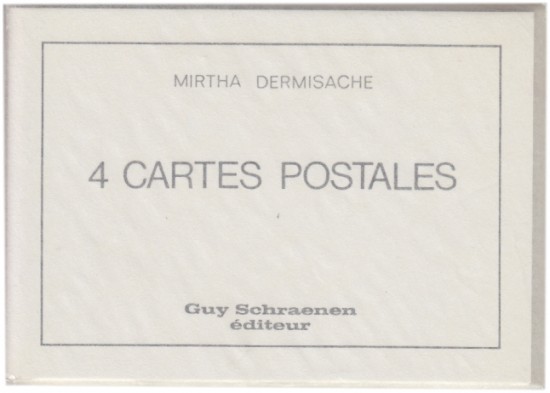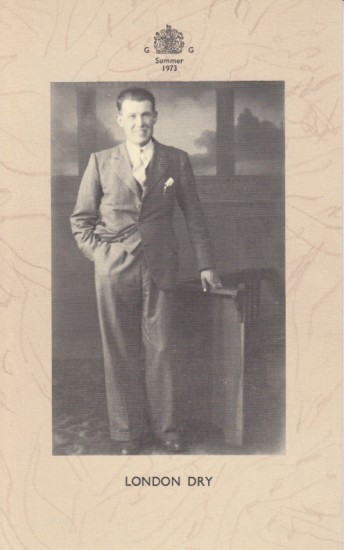Sun Pictures in Scotland
Fox Talbot, William Henry
London. 1845
Sold
Extremely rare unrestored copy - including the 'Notice to the Reader' - of William Fox Talbot's first photographically illustrated publication in book form; published in 1845, Sun Pictures in Scotland, was issued between parts IV and V of Talbot's seminal The Pencil of Nature.
Inspired by the writings of Sir Walter Scott (note Talbot's punning title), the focus of a Victorian personality cult not to be underestimated, the twenty-three images of Sun Pictures in Scotland were taken by Talbot on a tour of those sites and locations most connected to Scott. The calotypes depict Edinburgh, Scott's house Abbotsford, Loch Katrine, Melrose, Doune Castle, Dryburgh Abbey (site of Scott's tomb) and so on. The book appears to have been issued to subscribers and was intended to publicise Talbot's work in society, aided by the social influence of his mother Lady Elisabeth Feilding. It is likely that Angela Burdett-Coutts - among notables such as the Queen, the Duke of Devonshire and the Duchess of Bedford - was one such subscriber.
William Henry Fox Talbot (1800-1877), began experimenting with capturing images on light-sensitive paper around 1833 while at Lake Como, and patented the calotype (from the Greek 'kalos' - beautiful) or 'sun picture', also called a Talbotype, in 1840. It was the first instance of a photograph secured on paper and produced with paper negatives, the negative/positive technique still in use today, which allowed for multiple copies of the same image to be made, as opposed to the daguerreotype invented by L. J. M. Daguerre in 1839.
The novelty of Fox Talbot's new process is highlighted by the 'Notice to the Reader': 'The plates of the present work are impressed by the agency of Light alone, without any aid whatever from the artist's pencil. They are the sun-pictures themselves, and not, as some persons have imagined, engravings in imitation.'
Angela Burdett-Coutts (1814 - 1906), the daughter of Sir Francis Burdett and his wife Sophia, née Coutts, the daughter of Coutts & Co. founder Thomas Coutts, was, on the achievement of her majority in 1837, the inheritor of some £3,000,000, making her the 'richest heiress in England'. A noted collector, patron of the arts, endower of scholarships and philanthropist, she was created first Baroness Burdett-Coutts of Highgate and Brookfield by Queen Victoria in 1871 in recognition of her charitable works. A figure of great interest to the Victorian public and the receiver of numerous offers of marriage, Burdett-Coutts remained a spinster until her marriage to her secretary, William Bartlett, in 1881. The marriage provoked further interest as her 29-year-old secretary was nearly 40 years her junior. At her death in 1906, Burdett-Coutts had donated nearly £3,000,000 for the purpose of good works and charitable foundations. Among her many other causes, Burdett-Coutts founded the RSPCA and the NSPCC and received the Turkish order of the Medjidieh for her relief efforts during the 1877 Russo-Turkish War; she remains the only woman thus honoured.
'With its narrowly focused goal and limited number of copies distributed only to subscribers, Sun Pictures in Scotland remains one of the the most enigmatic of all Talbot's photographic ventures. Nevertheless, it can reasonably claim to be the first photographic essay in the history of the medium.' (Taylor).
'Aesthetically, Talbot's pictures possess many merits.' (Cecil Beaton, British Photographers, 1944).
'It may be considered the first photographically illustrated work to be published in book form.' (Gernsheim).
[PROVENANCE: Armorial bookplate of Angela Burdett-Coutts, the philanthropist and 'richest heiress in England' to front pastedown; manuscript note in sepia to front pastedown: 'Miss Burdett-Coutts / Stratton Street / A B / The First discovery of the Art'; and her ownership inscription in sepia to title page: 'Miss Burdett-Coutts, Stratton St. / A B'].
[Gernsheim 7; Johnson T55; The Truthful Lens 161; Gernsheim History of Photography, pg. 173; Taylor, Impressed by Light, pg. 21 - 22; Schaaf, The Photographic Art of William Henry Fox Talbot pg. 202 - 211].
Inspired by the writings of Sir Walter Scott (note Talbot's punning title), the focus of a Victorian personality cult not to be underestimated, the twenty-three images of Sun Pictures in Scotland were taken by Talbot on a tour of those sites and locations most connected to Scott. The calotypes depict Edinburgh, Scott's house Abbotsford, Loch Katrine, Melrose, Doune Castle, Dryburgh Abbey (site of Scott's tomb) and so on. The book appears to have been issued to subscribers and was intended to publicise Talbot's work in society, aided by the social influence of his mother Lady Elisabeth Feilding. It is likely that Angela Burdett-Coutts - among notables such as the Queen, the Duke of Devonshire and the Duchess of Bedford - was one such subscriber.
William Henry Fox Talbot (1800-1877), began experimenting with capturing images on light-sensitive paper around 1833 while at Lake Como, and patented the calotype (from the Greek 'kalos' - beautiful) or 'sun picture', also called a Talbotype, in 1840. It was the first instance of a photograph secured on paper and produced with paper negatives, the negative/positive technique still in use today, which allowed for multiple copies of the same image to be made, as opposed to the daguerreotype invented by L. J. M. Daguerre in 1839.
The novelty of Fox Talbot's new process is highlighted by the 'Notice to the Reader': 'The plates of the present work are impressed by the agency of Light alone, without any aid whatever from the artist's pencil. They are the sun-pictures themselves, and not, as some persons have imagined, engravings in imitation.'
Angela Burdett-Coutts (1814 - 1906), the daughter of Sir Francis Burdett and his wife Sophia, née Coutts, the daughter of Coutts & Co. founder Thomas Coutts, was, on the achievement of her majority in 1837, the inheritor of some £3,000,000, making her the 'richest heiress in England'. A noted collector, patron of the arts, endower of scholarships and philanthropist, she was created first Baroness Burdett-Coutts of Highgate and Brookfield by Queen Victoria in 1871 in recognition of her charitable works. A figure of great interest to the Victorian public and the receiver of numerous offers of marriage, Burdett-Coutts remained a spinster until her marriage to her secretary, William Bartlett, in 1881. The marriage provoked further interest as her 29-year-old secretary was nearly 40 years her junior. At her death in 1906, Burdett-Coutts had donated nearly £3,000,000 for the purpose of good works and charitable foundations. Among her many other causes, Burdett-Coutts founded the RSPCA and the NSPCC and received the Turkish order of the Medjidieh for her relief efforts during the 1877 Russo-Turkish War; she remains the only woman thus honoured.
'With its narrowly focused goal and limited number of copies distributed only to subscribers, Sun Pictures in Scotland remains one of the the most enigmatic of all Talbot's photographic ventures. Nevertheless, it can reasonably claim to be the first photographic essay in the history of the medium.' (Taylor).
'Aesthetically, Talbot's pictures possess many merits.' (Cecil Beaton, British Photographers, 1944).
'It may be considered the first photographically illustrated work to be published in book form.' (Gernsheim).
[PROVENANCE: Armorial bookplate of Angela Burdett-Coutts, the philanthropist and 'richest heiress in England' to front pastedown; manuscript note in sepia to front pastedown: 'Miss Burdett-Coutts / Stratton Street / A B / The First discovery of the Art'; and her ownership inscription in sepia to title page: 'Miss Burdett-Coutts, Stratton St. / A B'].
[Gernsheim 7; Johnson T55; The Truthful Lens 161; Gernsheim History of Photography, pg. 173; Taylor, Impressed by Light, pg. 21 - 22; Schaaf, The Photographic Art of William Henry Fox Talbot pg. 202 - 211].
Folio. (318 x 242 mm). Printed title with motto from Virgil, leaf with list of plates and 23 mounted Talbotype images, of which 13 are full-page, each numbered on the mount at lower right in ink, initial and final blank leaves. Tipped-in to front free endpaper is the 'Notice to the Reader'. Condition: Plates with uneven fading, as usual, central areas of most plates retaining strong dark impressions, outer areas of images rather lighter, but universally visible. Binding glue perished, contents loose in original boards. Original publisher's cloth-backed rust boards by A. Tarrant, with his discreet stamp to front pastedown: 'A. TARRANT, BINDER / 16 Gt. QUEEN St.', gilt title within elaborate gilt decorative border to upper board, boards with decoration in blind, original yellow endpapers, boxed.
#36898











